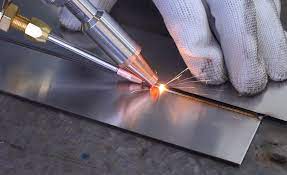In today’s highly influential tech society, the world of facial recognition technology extends far beyond its widely recognized role. From unlocking iPhones to verifying
clients in banks, it is changing the whole tech landscape. While the facial recognition process needs to be implemented across all industries, the convenience and personalization achievable through facial recognition is an excellent solution for businesses. Beyond the scope of device access, the face verification process adeptly navigates in the fields of security and identification. By comparing the facial characteristics of individuals replacing past purpose-designed cameras with images stored on watch lists, facial recognition shows its ability as a sentinel of the public safety process. This blog will discuss it in more detail.
What is Face Recognition Technology?
In the world of modern technology, the use of facial scanning technology is creating a remarkable impact in the field of identity verification. By scrutinizing and quantifying facial attributes within an image, this face-scanning software seamlessly distinguishes and corroborates an individual’s identity through their facial characteristics such as distance between eyes, noses and ears. The capabilities extend to recognizing human faces within images or videos, ascertaining the resemblance of faces across disparate images of visuals to spot a particular face. This technology has a pivotal role in biometric security frameworks, for unparalleled means to distinctly authenticate individuals during initial user integration or subsequent logins, thereby fortifying the scaffold of user validation endeavors.
The Facial Recognition Process
The facial recognition process resonates on a personal scale, finding common ground with mobile and individual devices as a guardian of device security. The facial recognition process has a number of steps that involve face detection and characteristic analysis, recognition of facial patterns and verification of user identity. The steps are explained in detail below.
Face Detection
The first step in the facial recognition process cycle is face detection. Businesses that adopt this tech implement face scanning technology with remarkable precision. In this step, the camera adeptly identifies and locates individuals’ faces, whether in isolation or within a bustling crowd, regardless of their orientation towards the lens. That is why it is referred to as a technological marvel that weaves stories of people amidst the diverse tapestry of life’s moments.
Analysis
After the face detection operation is complete, the next step in the facial recognition process cycle is an analysis of characteristics. The camera captures an individual’s faceprint, initiating a process of comprehensive analysis. Generally, facial recognition technology relies upon two-dimensional imagery, primarily due to its inherent convenience in aligning facial features with publicly available photographs or those archived within an expansive database. During this procedure, the software diligently deconstructs the facial topography, scrutinizing its geometric attributes. Different factors are under consideration for precise measurements such as the interocular distance, the depth of orbital contours, the vertical dimension spanning from forehead to chin, the structural configuration, and the elegantly defined curvature of the lip and jawline.
Recognition
The facial recognition process continues with face recognition. In this step, the system actually recognises the person in the lens by implementing various operations. The conversion of analog facial characteristics into a structured digital dataset, predicated upon the individual’s distinct face. This intricate facial analysis becomes encapsulated within a precise mathematical analysis, yielding a numerical representation termed a “faceprint.” Each individual possesses an exclusive faceprint just like fingerprints, thereby endowing it with unparalleled uniqueness and discriminatory potential. In a world that is highly influenced by digital innovation, the world of biometric authentication finds its security in faceprint, safeguarding both security and individuality.
Verification
Moving onto the last step of the facial recognition process, the procedure of KYC face verification performs the comparison of an individual’s unique facial characteristics, forming what is known as a “faceprint,” with an extensive repository of established faces. This practice is exhibited by the Federal Bureau of Investigation (FBI) and other legal agencies around the world, whose access extends to an assemblage of approximately 650 million photographs extracted from diverse state repositories. Social media platforms such as Facebook, Instagram, and X (formerly Twitter) equally contribute to this technology. any image annotated with a person’s name is put into a social media expansive database.
Conclusion
In 2023, every small gadget will be highly influenced by modern technologies, primarily AI. Facial recognition technology is in its evolving stages, and the regulatory landscape governing this domain remains in a state of constant evolution. For ordinary citizens whose facial data falls prey to compromise, a facial recognition system provides a great solution to safeguard online interactions and prevent fraud. Instances cybersecurity companies are implementing modern technologies such as biometric authentication, and facial recognition processes top the list. As the integration of facial recognition is rising across multifarious sectors, the opportunities for improving digital security and preventing fraud are becoming more easy and frequent.



